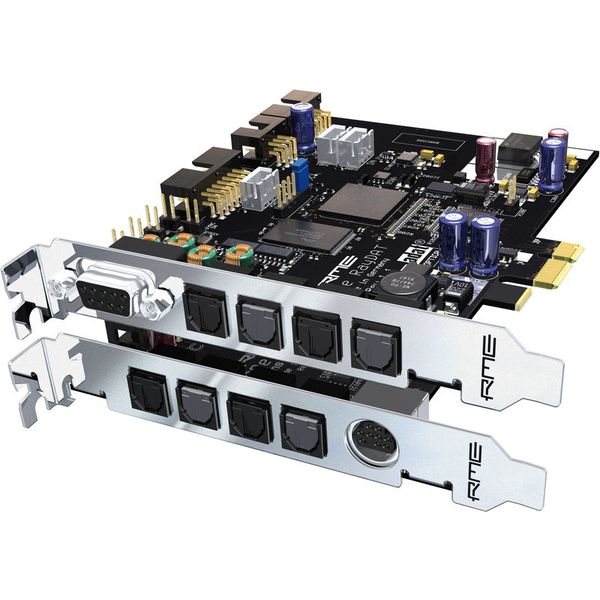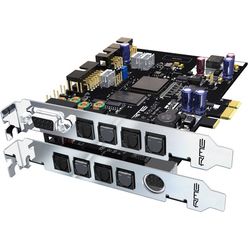Express Card ADAT/AES PCI a 72 canali
HDSPe RayDAT è un dispositivo multi-canale, multi-formato e multi-task di qualità professionale eccezionale ed è la soluzione ideale a partire dalla registrazione fino ad arrivare al mastering. Grazie a hardware separati e canali di registrazione/riproduzione aggiuntivi, SPDIF (RCA) e AES/EBU (XLR) possono essere usati contemporaneamente per la prima volta. RayDAT offre niente di meno che 4 ingressi e uscite ADAT (ottici), ingressi e uscite SPDIF e AES/EBU. Non meno di 36 canali di ingresso e uscita ciascuno.
Due ingressi e uscite MIDI e TotalMix, l'insuperabile mixer in tempo reale di RME basato su DSP con level meter calcolati tramite hardware e la possibilità di controllo remoto tramite MIDI completano il set di funzioni. HDSPe RayDAT supporta ovviamente anche l'utilizzo del TCO opzionale per la sincronizzazione su Timecode (LTC/video).
Le uscite e gli ingressi ADAT interni consento il collegamento di due TEB opzionali (TDIF Expansion Board). In questo modo sono disponibili fino a due porte TDIF direttamente nel computer.
HDSPe RayDAT è la versione PCI Express rinnovata della precedente variante PCI. Un nucleo PCI Express completamente rinnovato supporta la performance completa dell'attuale tecnologia Bus seriale super veloce. Basata sullo sviluppo di FPGA di RME, la scheda consente aggiornamenti successivi anche per le future funzioni hardware e software grazie all'opzione Secure Flash.
- 24 bit/192 kHz
- 4 ingressi e uscite ADAT (fino a 192 kHz in S/MUX4) + ingressi e uscite S/PDIF e AES /EBU (fino a 192 kHz)
- 2 ingressi e uscite MIDI
- Fino a 72 canali di entrata e uscita, utilizzabili contemporaneamente
- Compatibile con WIN 2000/XP/Vista/64 e MAC OSX Intel
Comprati dai clienti che hanno visto questo prodotto
-
RME Interfacce PCI Express in mostra
-
Mostra Interfacce PCI Express nella gamma di prezzo 500 € - 1000 €
-
Vai al gruppo del prodotto Interfacce PCI Express
-
Vai al gruppo del prodotto Interfacce Audio
-
Vai al gruppo del prodotto Studio e Registrazione
-
Mostra le informazioni del produttore per RME
-
RME Studio e Registrazione in generale














